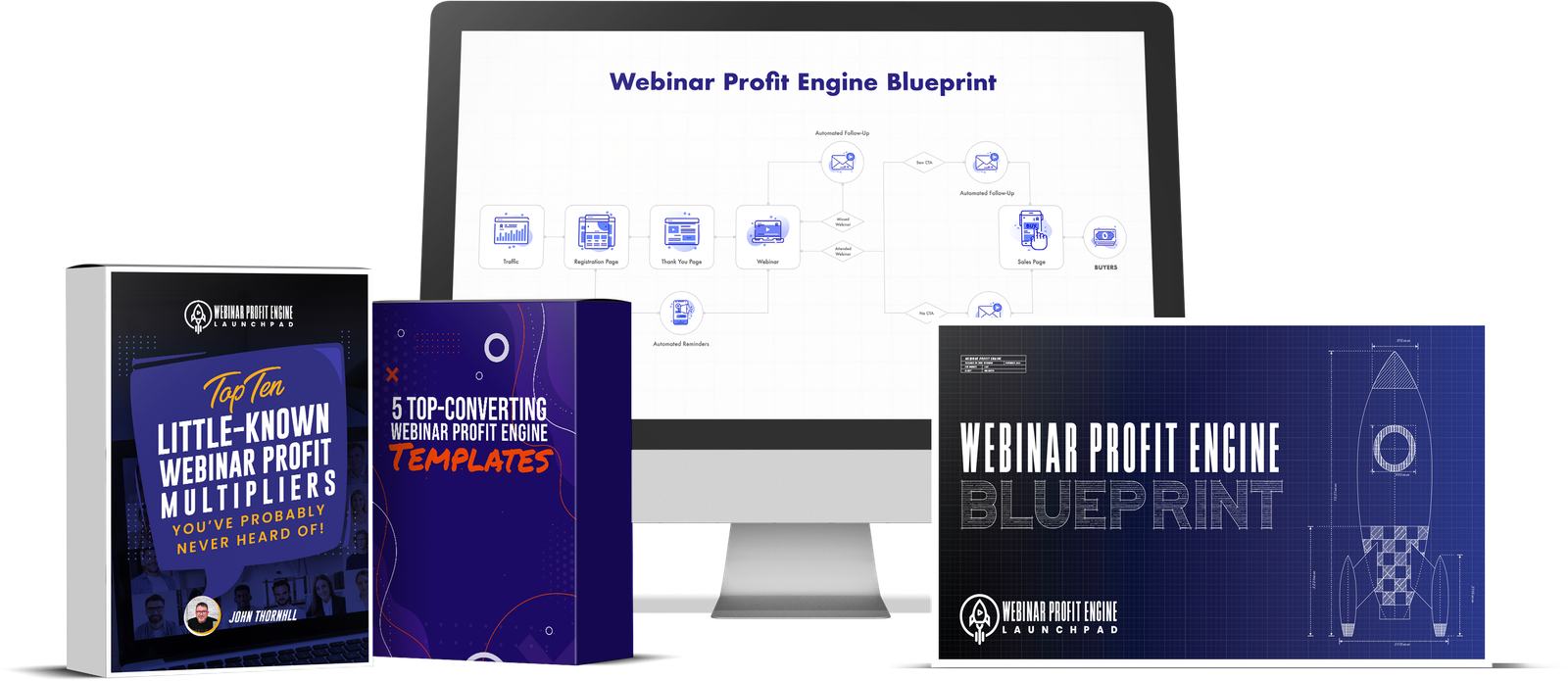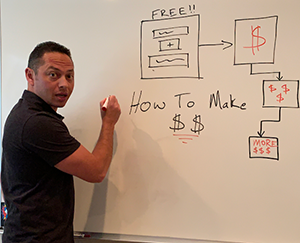Hypothesis-Driven Growth: How to Turn Data into Revenue written by John Jantsch read more at Duct Tape Marketing
The Duct Tape Marketing Podcast with John Jantsch In this episode of the Duct Tape Marketing Podcast, I interviewed Doug Davidoff, the founder and CEO of Lift Enablement and the author of The Revenue Acceleration Framework. Dough Davidoff brings over 20 years of experience advising small and mid-market companies focused on significant growth. Known […]
Hypothesis-Driven Growth: How to Turn Data into Revenue written by John Jantsch read more at Duct Tape Marketing
The Duct Tape Marketing Podcast with John Jantsch
In this episode of the Duct Tape Marketing Podcast, I interviewed Doug Davidoff, the founder and CEO of Lift Enablement and the author of The Revenue Acceleration Framework. Dough Davidoff brings over 20 years of experience advising small and mid-market companies focused on significant growth. Known for his no-nonsense approach, he combines real-world research with systems design to develop effective business and growth strategies. In our conversation, Doug Davidoff defined the concept of hypothesis-driven growth and explained how businesses can leverage this approach to turn data into revenue.
Key Takeaways
Questions I ask Doug Davidoff:
[02:12] What’s the difference between rev ops and marketing?
[04:56] How does the difference between speed and velocity affect business growth?
[06:24] Where do people get applying tech to marketing wrong?
[08:58] Talk briefly about the underlying objective when you enter a company.
[11:00] How do you address companies that take a very siloed approach to Sales & Marketing?
[13:24] Are there totally different approaches to legacy companies and companies starting off?
[17:07] What’s a thumbnail sketch of your typical process and methodology?
More About Doug Davidoff:
- Connect with Doug Davidoff on LinkedIn
- Visit his Website
- Grab a Copy of The Revenue Acceleration Framework: A Proven Roadmap to Transform and Dynamically Grow Your Business
Like this show? Click on over and give us a review on iTunes, please!
Connect with John Jantsch on LinkedIn
Speaker 1 (00:00): I was like, I found it. I found it. This is what I’ve been looking for. I can honestly say it has genuinely changed the way I run my business. It’s changed the results that I’m seeing. It’s changed my engagement with clients. It’s changed my engagement with the team. I couldn’t be happier. Honestly. It’s the best investment I ever made. What
John Jantsch & Dough Davidoff (00:17): You just heard was a testimonial from a recent graduate of the Duct Tape Marketing certification intensive program for fractional CMOs marketing agencies and consultants just like them. You could choose our system to move from vendor to trusted advisor, attract only ideal clients, and confidently present your strategies to build monthly recurring revenue. Visit DTM.Jantschworld/scale to book your free advisory call and learn more. It’s time to transform your approach. Book your call today, DTM World slash scale.
(01:03): Hello and welcome to another episode of the Duct Tape Marketing Podcast. This is John Jantsch. My guest today is Doug Davidoff. He’s the founder and CEO of Lift enablement. With over 20 years of experience advising small and mid-market companies focused on significant growth, he has directly advised more than a dozen companies that have collectively sold over $1 billion known for his no nonsense approach. He combines real world research with systems design to develop effe-cutive. I just made up a new word, effective Business and Growth Strategies is also the author of a book we’re going to talk about today, the Revenue Acceleration Framework, A Proven Roadmap to Transform and dynamically Grow your Business. So Doug, welcome to the show. John, it is great to be here. Long time Dan, and if it makes you feel any better, every word was made up at some point. Yeah, that’s a good point.
(01:55): That’s a good point. I think I might be onto something though. If I could say it again. It sounded like something I could own and define. Yeah, it’s like right up there with Strategery or something. Yeah, exactly. I wonder if we could start off, if you have your own podcast where you talk about, or at least in the titles, rev ops, right. Let’s start with a definition. What’s the definition or the difference, I should say, between rev ops and marketing? So Rev Ops is really a strategic backstage discipline that’s responsible for looking at how a company generates and sustains revenue, how they allocate the resources. So a strong rev ops function is enabling marketing. It’s going to generate more velocity for marketing. But yeah, so it is really taking that holistic approach and managing those trade-offs so that marketing can do what they do best and sales can do what they do best and success can do what they do best.
(02:54): So you would suggest, I know you do suggest, so I don’t want to put words in your mouth, but that it’s a completely different discipline than marketing. Yes. Yeah, it is. The analogy that I like to give is, if we think about theater, what we want to do as a business is we want a standing ovation. We want people to love what we do, and they can’t help but talk about what they just saw and what gives you that standing ovation, that front stage experience, right? What’s the front stage? Anything that your customers see, feel, or touch? We’ll talk to any actor on Broadway and they’ll tell you the key to a successful front stage experience is a really good backstage and a really good support function behind that backstage. That’s rev ops. Would you say that this is an area that it’s not necessarily a new discipline, but is it one that people are waking up to or do we still have a lot of room?
(03:44): There’s a lot of companies out there that don’t even consider this as something that they need to optimize? I talk about this in the book, actually. It’s funny because the answer to that question is really dependent upon the type of business and the size of the business. So it’s not new at all. IBM’s had sales operations, which is a portion of revenue operations for decades. I think if you take a look at the typical small mid-market business, the vast majority of them do not have a formal rev ops function. One of the things I’d like to point out is you have rev ops, whether you’re calling that rollout or not, it’s just happening in the tech space. Happy to say it’s no longer the top of the hype cycle because AI has pushed everything way past, but I actually think that in the tech space, we’ve seen rev ops become this catchall phrase for, oh, we’re rev ops, or let’s do rev ops.
(04:43): That’ll fix that. So it’s like in that place where it’s still trying to find your question of what is rev ops is still a very relevant question. So when it comes to, or at least in the context of business growth, I know you talk a lot about the difference between speed and velocity. How does that come to play in the context of business growth? So I’ve got to share the story of where I came to understand the difference between speed and velocity. So I was coaching my son’s baseball team. I was the third base coach. We’re playing the first game of the year, and Austin is our number nine hitter. And everything we knew about Austin was, you look at Austin’s fast, and so he’s on first base, there’s no outs. He’s on first base. I give the signal to steel, Austin takes off pitches, thrown catcher throws to second base, and I kid you not.
(05:31): The second baseman is waiting for Austin to get there to tag him out. Inning ends, I go over and everyone’s, what happened? What went wrong there? Did he not get a good jump? I’m like, no, I don’t know. And someone came along and said, you guys are missing, and Austin moves his feet really fast, but he doesn’t really go anywhere. And so that’s when I realized that’s the difference between speed and velocity. Speed is how hard are we working? How fast are we going? Velocity is, are we making progress towards where we want to be? And it’s the old Stephen Coveys that I can take a high speed train from Boston to Los Angeles. It doesn’t do me any good if I’m trying to get to Miami end a few years ago. I don’t hear it as much, but it used to be very trendy to call yourself a full stack marketer.
(06:17): I really don’t know what that meant, but it sounded cool. We’re talking about particularly in marketing, tech stacks are a huge deal. So I guess I should say what’s the right way to do that? Or where do people get that wrong? In terms of applying tech to marketing or Yeah, or to ops in the case, because a lot of what you’re doing is dialing in the technology, and if we’ve got all these disparate parts that don’t talk to each other, that’s probably a challenge. So John, I’m sure you’ve seen this through the years of fads and FOMO that come out. It’s amazing how when a company starts selling something, one of the things that has unfortunately driven the noise around rev ops is a lot of tech companies creating these solutions for rev ops and saying that you need rev ops. And so I think the first mistake is when you view anything through the lens of technology. So we live by what we call the prime directive at Lyft, and that directive is the business process must drive the technology. The technology can never dictate the business process. So it’s important to understand technology is not a solution. Technology is an enabler. It could be an accelerator, but it’s not the solution. So the big mistake that happens is we don’t get clear on what is the job that we’re trying to do? What’s the problem that we’re trying to solve?
(07:43): I deal regularly with tech that is not working. I’ve yet to see a time where the tech wasn’t working, where the issue wasn’t actually an ambiguity, a conflict or a confusion around the underlying business process. And so that’s the place where we get in trouble is tech makes it so easy to make it complicated. We embrace the complication, and this is our fifth CRM system this year, right? Salesforce, Microsoft Dynamics, HubSpot, I can show you 20 companies that tell you it’s the greatest thing they’ve ever had. It’s transformed their companies. And I can find you 20 companies that said that thing was rock. It didn’t do anything. Exactly. So you started to hint at it. And I know a big part of what you just talked about was the jobs to be done theory. I don’t really remember who gets credit for that idea. Clayton Christensen.
(08:37): Clayton Christians. The person who popularized it, at least I knew I’d hear it numerous times. I could remember it was in Crossing the Chasm, or was that Innovators Dilemma? Innovators Dilemma, innovator Solution. Okay, cool. Alright, so that’s a big part of what you just explained. So maybe make it practical. When you go into a company, you obviously open up that toolkit and instead of looking at the tech, you try to find the underlying solution or the objective maybe. So talk a little bit about that, how you apply that. Yeah, and one of the things that I talk about too when it comes to technology is never buy technology. You should only hire it. And if you start looking at the things that you’re doing, I talk about this from a marketing standpoint. I say never implement a marketing campaign. Hire a marketing campaign. So when we’re going to hire somebody, we start off when we say, what does success look like?
(09:30): What is it that the business is trying to accomplish? What’s the gap? What’s the capability? I look at technology, I look at campaigns, I look at strategies and tactics. People. I look at them as capabilities fill gaps. So here’s where I want to be. Here’s where I am. Here’s what I think the difference is. I talk in the book about hypothesis driven growth, always have a hypothesis. We talk about the science of growth. The science of growth is hypothesis, test, learn. And if you take that approach, have a hypothesis, figure out what are the keys, this allows you to be wrong. So I have hypothesis, I do something, I get a result from that. That result is either what I expected or something different. All the learning comes when the result is different than what I expected. Then I draw my next hypothesis and I just bring that cycle.
(10:25): And if you do that, you’re going to find you are going to make progress. Progress is going to be a byproduct of what you’re doing. And that’s why the companies that do that well, and that’s what I talk about in the framework, is they look back 18, 36 months later and they go, we’ve transformed. Wait, we’ve totally changed. Even though through that effort, they never really felt like they were going through all that much change. They felt like they had a lot of stability when in fact they were far more dynamic than the competitive set that was seeking transformation. When you work with organizations and they’re still out there, fortunately they’re changing some, but that still take a very siloed approach because that really, if A is not talking to B and B is not talking to C, things break down. So how do you address that?
(11:12): Do you just tell ’em they have to stop? What do you do? So I have a little bit of a counterintuitive approach here. I embraced the silo. So you talked about full stack marketers, and that reminded me of the term that came before that was the, you remember this, the T-shaped marketer. Yeah, right. A little bit of this and a lot of that. So the thing for us to understand about silos is we need silos. We need constraints. There is a specialization. If I’m doing social media, there is a specialization and there is a depth to what is going on with social media. Marketing has its role, sales has its role. So it’s not that the silo in and of itself is the, and I think too often we come in and we say we need to get rid of silos. And then someone goes, I don’t know what to do.
(12:00): What I find missing is the context. That’s why I love frameworks is the framework lets us talk to this. And what’s happened with sales and marketing especially, it’s my favorite image in the entire book is I talk about the old way of marketing, which was marketing, then sales. Then the new way of marketing is marketing and sales. In parallel. The right way is sales and marketing are completely intertwined. So when we look at the framework, it serves as that translator. It brings in th
Related Posts
Recommended Story For You :

The Step-By-Step “Profit Engine” Blueprint.

How To Make $3493 Commissions Without Doing Any Selling

Successful dropshippers have reliable suppliers.

People Think I Use A Professional Voiceover Artist. NO! I Just Use Speechelo!

Make Money Testing Apps On Your Phone Or Tablet

Make More Money or Lose Everything

Sqribble Is The ONLY eBook Creator You’ll Ever Need.

Work & Earn as an Online Assistant

Create Ongoing Income Streams Of $500 To $1000 Or More Per Day


